South Asia Breaks Immunisation Records: What the WHO and UNICEF Data Reveals
Explore how South Asia reached record-high vaccination coverage in 2024—driven by government initiatives, tech, outreach, and partnerships—setting a global precedent.
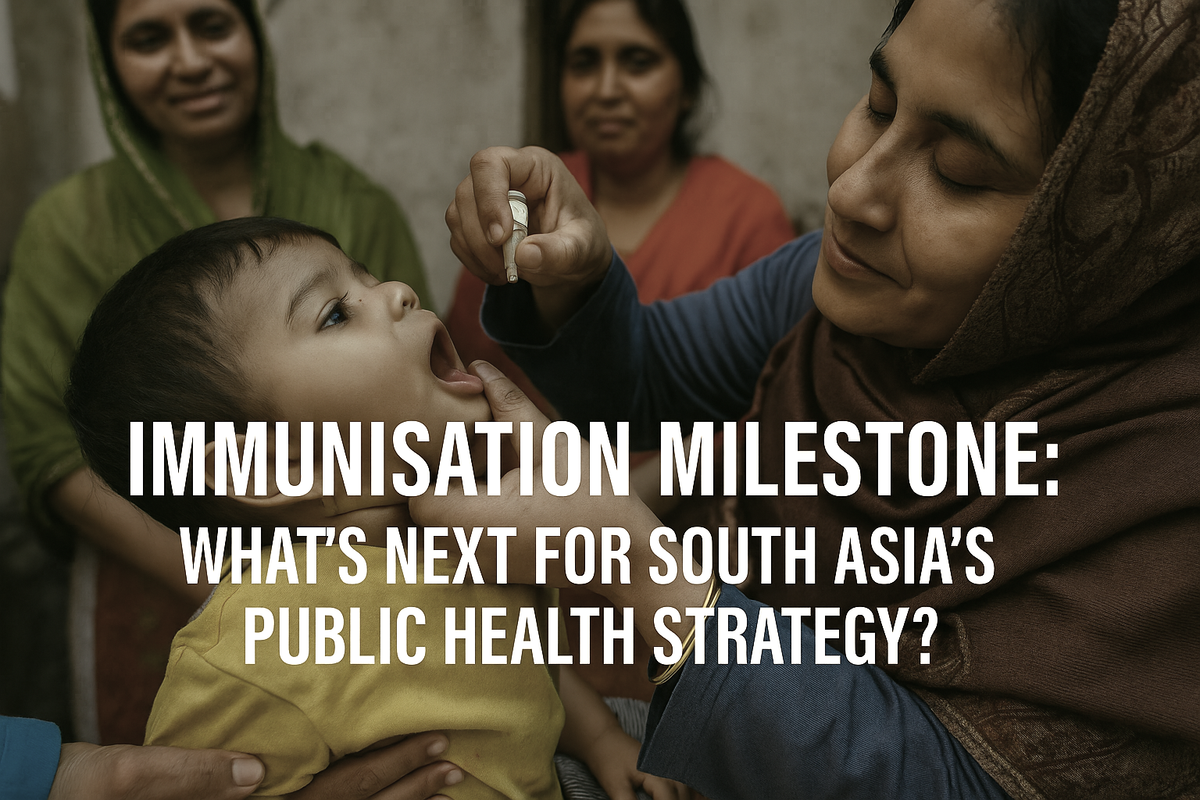
New Delhi, July 16, 2025
South Asia has reached a significant health milestone. In 2024, the region achieved its highest childhood vaccination coverage ever, according to data from WHO and UNICEF.
The Data Speaks: Vaccination by the Numbers
UNICEF and WHO released strong statistics showing:
- DTP3 coverage increased from 90% in 2023 to 92% in 2024 across South Asia.
- The number of zero-dose children dropped dramatically: in India by 43% (from 1.6 million to 0.9 million) and in Nepal by 52% (from about 23,000 to 11,000).
- The measles vaccine (MCV1/M): The first dose reached approximately 93%, and the second dose reached about 88%, with a 39% drop in reported measles cases.
- HPV uptake rose from 2% in 2023 to 9% across the region, with Bangladesh vaccinating over 7.1 million girls alone.
- Pakistan recorded its highest DTP3 coverage at 87%, while Afghanistan’s coverage continued to decline.
Despite this success, roughly 2.9 million children in the region remain under- or unvaccinated.
Digging Deeper: What’s Driving the Surge?
Government Leadership & Strategic Investments
South Asian governments took bold actions:
India’s Universal Immunisation Programme (UIP) and Mission Indradhanush pushed vaccination rates well above pre-pandemic levels, achieving gains of about 6–7% per year.
Bangladesh, Bhutan, Nepal, and the Maldives integrated HPV vaccines into national adolescent health programs, focusing on gender equity.
WHO-SEARO reaffirmed immunization as a basic right and essential for universal primary health coverage.
Tech-Enabled Delivery: Cold Chains, Dashboards, and Digital Nudges
Solar-powered fridges in Nepal now keep vaccines safe in remote Himalayan areas.
Smartphones with GIS dashboarding, AI reminders, and SMS alerts improved both supply chain management and caregiver compliance.
India’s CoWIN platform for digital health records expanded smoothly to cover routine vaccines.
Outreach & Community Trust
Mobile clinics and health camps in tribal areas of Bihar, Odisha, and Pakistan followed a successful model from Rajasthan, where monthly services with small incentives increased full immunization from 6% to 38%.
In Pakistan, mobile money transfers and SMS reminders improved vaccination timing and coverage two to three times.
India’s SMNet, featuring over 7,000 mobilizers from polio efforts, adapted their skills for routine immunization.
Engaging local influencers, or “information hubs,” boosted vaccination rates by nearly 55% when paired with reminders and incentives.
Equity Through Finances & Logistics
Gavi, UNICEF, the Gates Foundation, the World Bank’s BOOST program, and WHO jointly funded cold chains and trained over 150,000 frontline staff.
Conditional cash transfers in India and Pakistan cut costs per immunized child from about $56 to $28 in pilot areas.
Digital mapping helped target hard-to-reach and tribal populations, not just urban centers.
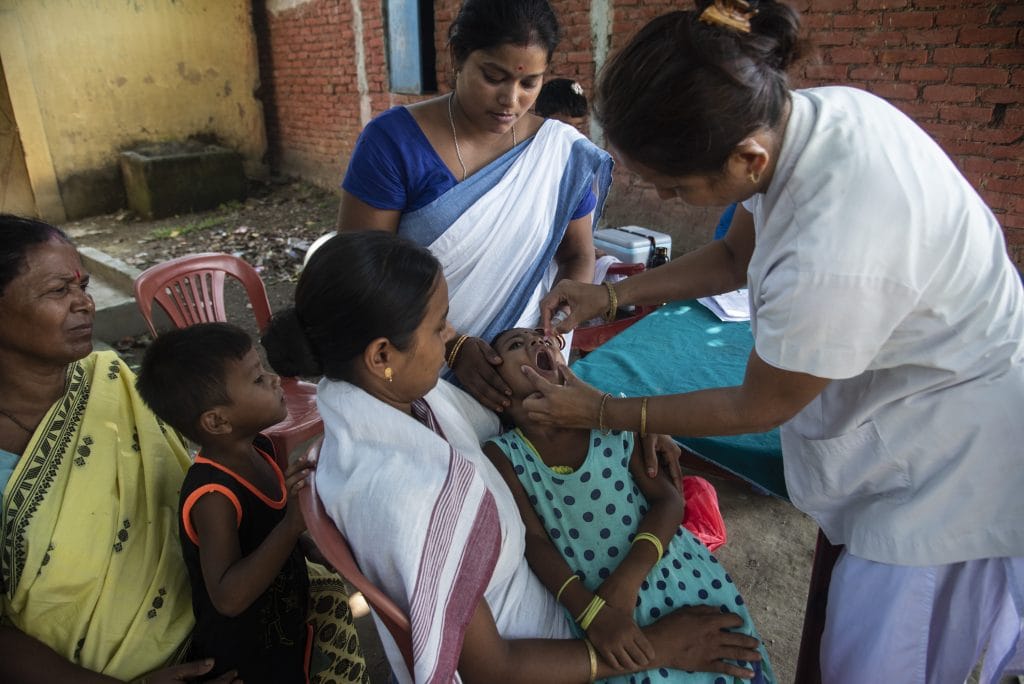
Personal Voices: Ground-Level Impact
Story from Chhattisgarh
“We used drums and songs to gather the villages. Vaccines are protection, not pain,” says Sunita Devi, an Anganwadi volunteer in remote Chhattisgarh.
Her experience reflects the efforts of many who went door-to-door to educate and vaccinate, turning distances into connections of trust.
Tech Meets Trust in Haryana
ASHA worker Neha used the CoWIN app and tablet in Haryana to follow a newborn’s immunization schedule, even in a remote village with low vaccine acceptance. “Technology gave me the confidence to reassure the mother about safety,” she remembers.
Adolescents in Kathmandu
Nineteen-year-old Maya, a peer educator in Kathmandu, shared, “HPV shots were scary at first. But when older sisters in the hospital explained clearly and answered our questions, most of us did come forward.” In February 2025, Nepal’s campaign reached 1.4 million girls, leading to broad acceptance.
Disease-Specific Triumphs: From Polio to HPV
- Measles mortality fell by about 61% across the region from 2019 to 2024.
- Polio-free status has been maintained through house-to-house mop-ups and routine vaccinations, contrasting with ongoing outbreaks in conflict zones elsewhere.
- HPV campaigns in Bangladesh, Bhutan, the Maldives, Sri Lanka, and Nepal lay the groundwork for cervical cancer prevention, with a rollout expected in India and Pakistan in late 2025.
These achievements not only save lives but also push South Asia closer to the Sustainable Development Goals.
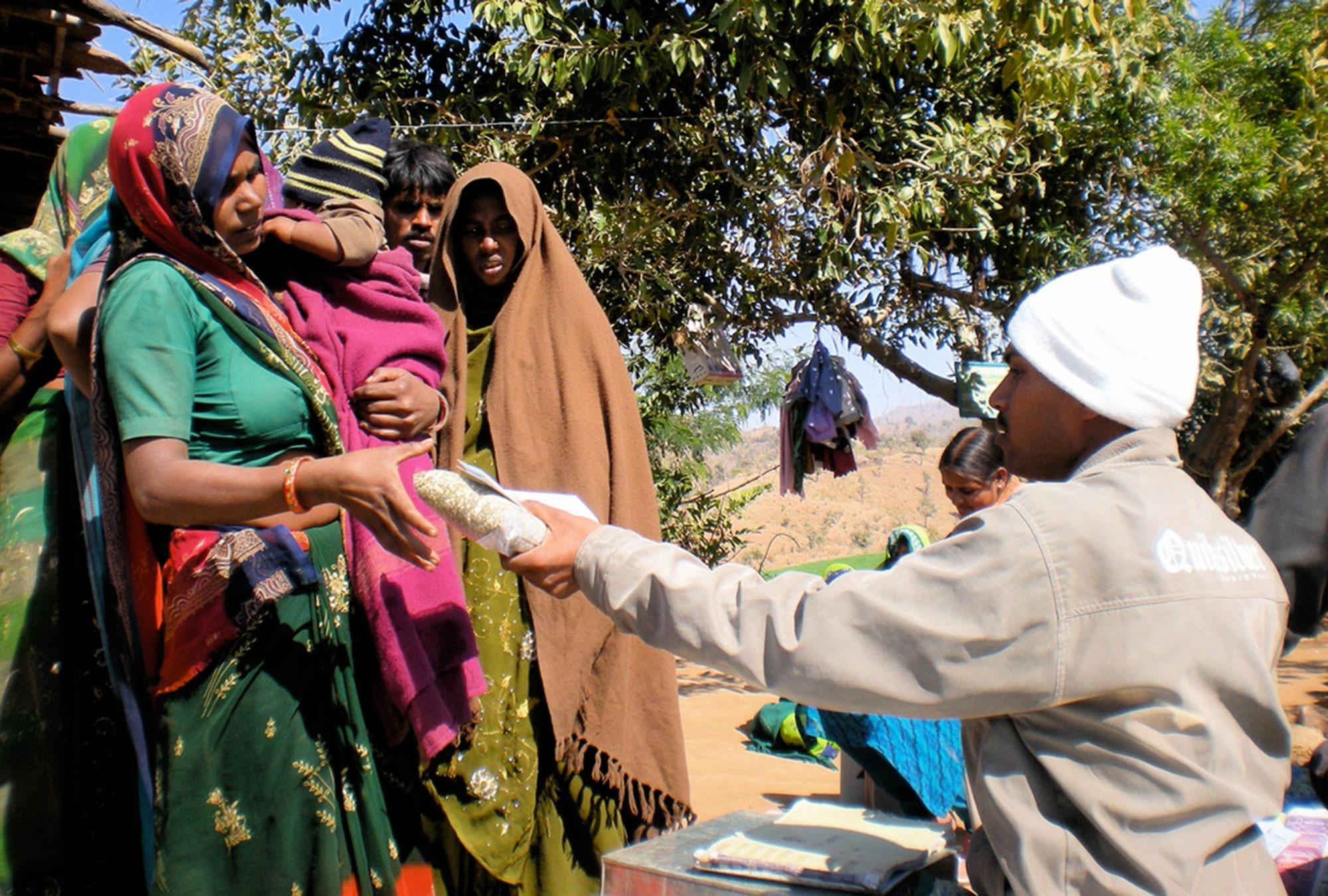
Tech & Human Capital: The Engine of Resilience
ASHA and Anganwadi workers formed the backbone of vaccination outreach, supported by digital data systems.
NGOs like Operation ASHA proved that last-mile delivery is possible. Their model is being considered for routine immunization.
AI platforms suggest future possibilities, such as "AI-on-Mobile" clinics for remote diagnostics.
Investments in mobile health vans, community camps, and cold storage surged during the pandemic and continue to be essential in the post-2022 recovery.
A Blueprint for Broader Health: Beyond Vaccines
Vaccination has sparked a broader transformation in health systems.
Programs for maternal health, nutrition, anemia screenings, menstrual hygiene, and early childhood education are now included during outreach vaccination camps.
Policymakers are using digital systems and workforce training set up for vaccines to enhance other public health initiatives.
South Asia's connected model—funding partnerships, tech innovations, workforce development, and community trust—is becoming a global model for fair universal health coverage.
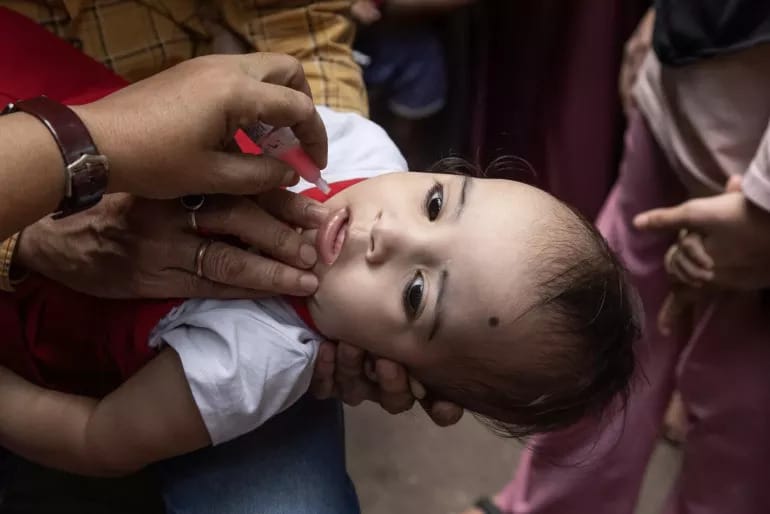
What Lies Ahead: Navigating New Frontiers
While South Asia's success is historic, new challenges arise:
- 2.9 million children still lack protection, especially in conflict zones like Afghanistan and parts of Pakistan.
- Funding uncertainty: As major donors shift, governments need to strengthen local immunization budgets.
- Vaccine fatigue and misinformation, particularly regarding HPV and new vaccines, fuel hesitation.
- Maintaining cold chain integrity, workforce motivation, and tech operations will require ongoing investment.
Broader Reflections: A Global Health Catalyst
South Asia’s progress represents more than regional achievements; it sets a global example for resilience, equity, and community-centered health care after the pandemic.
It shows how low-cost incentives, digitally empowered workers, and community mobilization can replace traditional service models.
In marginalized tribal and economically disadvantaged areas, shared tech tools and human networks proved crucial.
As global health priorities shift to pandemic readiness, tackling misinformation, and introducing new vaccines, South Asia's model stands as effective evidence.
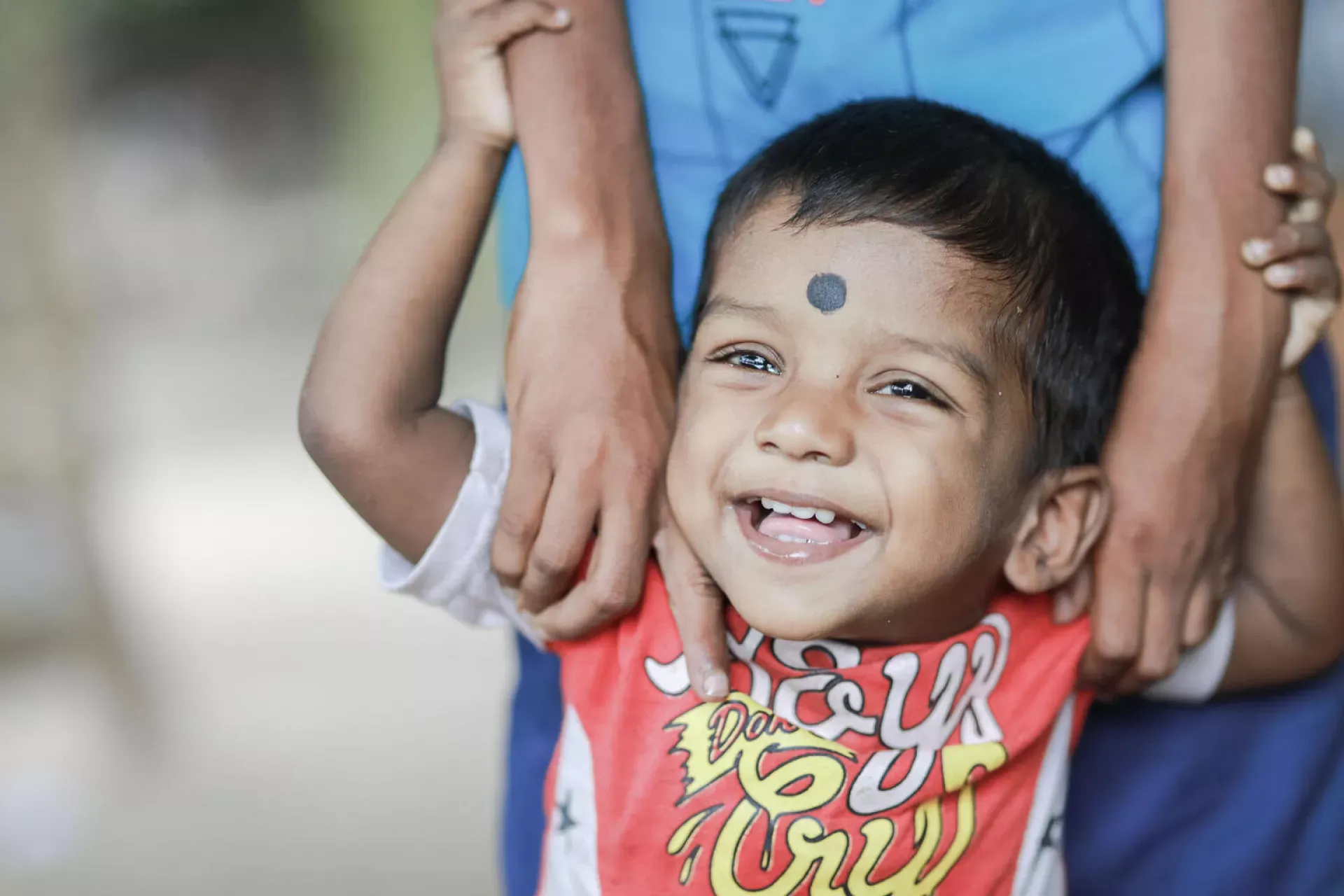
From Local Triumphs to Global Teachings
South Asia’s record-breaking immunization is a triumph of leadership, innovation, and shared commitment to equity. The success is seen in fewer deaths, healthier lives, and systems designed to withstand challenges and flourish.
However, the story won't be complete until every child, whether in an Afghan valley or a Bangladeshi delta, is immunized. Continuing the campaign necessitates moving beyond health barriers and integrating education, maternal care, nutrition, and social empowerment into outreach efforts.
New Perspectives on Next Steps
South Asia has laid the groundwork. The next challenge asks:
- How can this model expand into fragile, conflict-affected areas and refugee camps, where infrastructure is weak and trust is lacking?
- What innovations in digital monitoring, AI-driven outreach, and community-led accountability are needed to address vaccine fatigue and misinformation?
- As HPV, malaria, and future pandemics approach, how can we maintain cross-sector partnerships, local funding, and public trust?
What do you think?
In fragile or conflict-affected areas, where infrastructure, trust, and governance are weak, what adaptations of the South Asia immunization model could realistically succeed? How might digital tools, community ambassadors, and global partnerships contribute?
Sources
- WHO/UNICEF Joint Press Release – July 2025
- UNICEF South Asia Immunisation Report
- UNICEF Immunisation Data Hub
- Daijiworld on Zero-Dose Reduction
- The Tribune India: South Asia Immunisation Coverage
- India's Universal Immunisation Programme
- Mission Indradhanush Explained
- WHO-SEARO Technical Overview
- UNICEF: 5 Health Innovations in South Asia
- J-PAL on Incentive-based Immunisation
- J-PAL Pakistan CCT Study
- Gavi: Vaccine Alliance
- CoWIN Digital Platform
- Polio Eradication Efforts – Global Update
- Operation ASHA Model
- PMC Article on SMNet Mobilizers
- UNICEF Photo Stories – South Asia Immunisation
- DD News: India’s Routine Immunisation Push
- PATH: Mobile Clinics Impact Story




